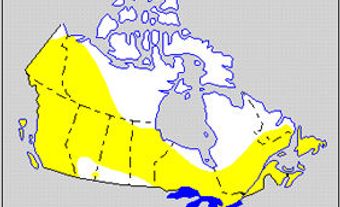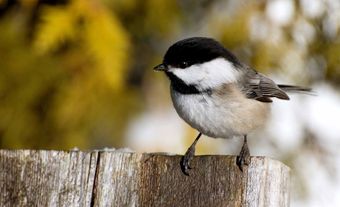The nighthawk is a medium-sized bird of the goatsucker family (Caprimulgidae), characterized by a very short, exceptionally wide bill, enhanced by a ring of projecting bristles to assist with the capture of insects in flight. Nighthawks have large eyes, small, weak feet, long, pointed wings, and soft plumage of mottled blacks, browns, greys and whites.
Most active at twilight and night, nighthawks spend the day crouched lengthways along a limb or fallen log or hidden in a natural cavity on the ground, or rely on their camouflaged plumage to escape detection. Nighthawks are known for their seemingly erratic wing beats, for regularly repeating nonvarying calls for extended periods, and for producing a booming sound with their wing feathers during steep, high-speed dives.
Common nighthawk (Chordeiles minor), occurring throughout all but arctic Canada, prefers to deposit its 2 eggs on open ground. Whip-poor-will (Caprimulgus vociferus) of eastern and central Canada lays 2 eggs on the forest floor and forages near the ground.
Common poorwill (Phalaenoptilus nuttallii) inhabits semiarid areas in southern BC and occasionally Alberta, laying 2 white eggs on bare ground, often under a shrub. This was the first bird species known to hibernate. When disturbed at the nest, these birds often hiss, snakelike, and feign injury.

 Share on Facebook
Share on Facebook Share on X
Share on X Share by Email
Share by Email Share on Google Classroom
Share on Google Classroom





